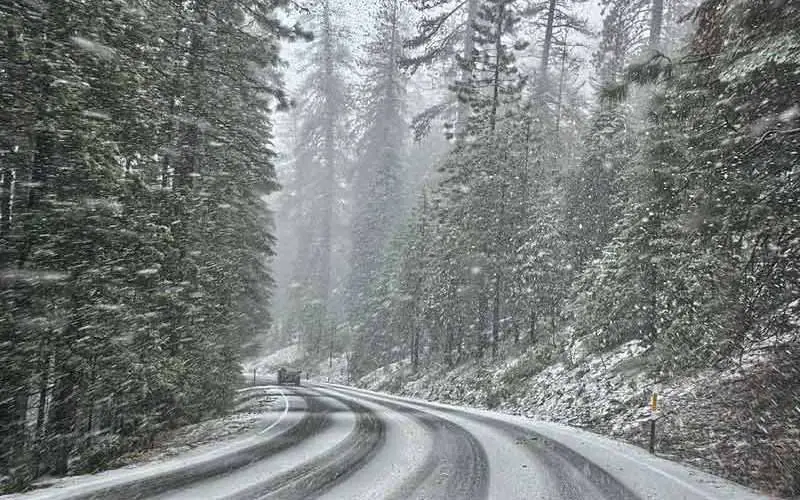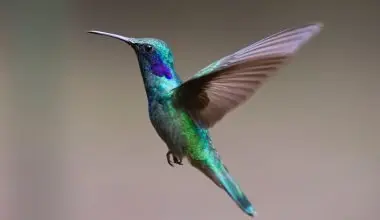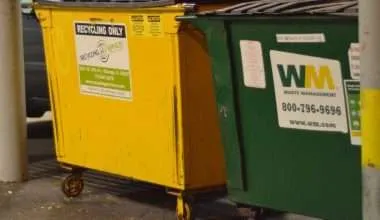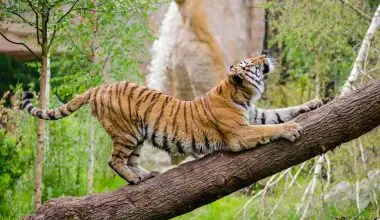Table of Contents Show
The roads that you use daily to take you to the places you need to go, odds are that they split a habitat by cutting through it. Habitat fragmentation produces isolated areas of landscape. It can have damaging consequences on biodiversity.
What is Habitat Fragmentation?
Picture that one day you are driving to work, and all of a sudden there is a new wall in the road hindering you from going any farther. You know what is on the other side – your workplace, the convenience store, your friends and family.
But, you are now totally severed from these main resources, and going about your life routinely doesn’t seem like a possibility any longer.
Although you rely on the road to go to the places you need to go, that road itself may have cut through a habitat that was once adjoining.
Animals that live in these habitats are now in the same state that you were when your road was impassable for their habitat has become fragmented. Fragmented habitats are habitats that were at one time contiguous. They are now divided into reduced, sequestered spaces.
Forest Fragmentation
In forest fragmentation, woodlands decrease to small, isolated areas of forest. These are forest fragments or remnants. This type of fragmentation may occur naturally or it may be man-made.
The conditions that isolate the residual woodland patches can be farmland, natural open areas, or developed areas.
The principles of island biogeography, guide the ecology of isolated leftover woodlands. These act like isles of forest in a sea of pastures, fields, subdivisions, shopping malls, etc.
Fragments will then start to experience the process of ecosystem deterioration.
Forest fragmentation also includes clear kinds of cutoffs such as utility right-of-ways (ROWs). Utility ROWs are an environmental concern. They have become prevalent in many forest communities, covering areas as large as 5 million acres in the United States.
Utility ROWs consist of electricity transmission ROWs, gas pipelines, and telecommunication ROWs. Electricity transmission ROWs are formed to avoid plant intrusion with transmission lines.
Studies have shown that the areas under electric power lines can have more types of plants than the forests nearby. This happens because the environment around these power lines changes, making it better for different kinds of plants to grow.
Where there are gaps in the forest because of utility lines, they can be biodiversity harbors for native bees and grassland animals. This is because these gaps conserve the habitat in its natural state
But forest fragmentation means less food and homes for animals, and they get separated from each other. This makes them easier targets for predators and less likely to find a mate, which impacts their genetic diversity.
Causes of Habitat Fragmentation
1. Natural Causes
We can see evidence of habitats getting destroyed by natural things like volcanoes, fires, and changes in the climate in the fossil record. For example, about 300 million years ago, the breaking up of rainforests of Euramerica led to many problems for amphibians.
But at the same time, because the climate was getting drier, it led to more kinds of reptiles emerging.”
2. Human Causes
Humans often cause habitat fragmentation. This happens when they clear out natural areas. They do this to make space for things like farming, building houses, and making hydroelectric reservoirs.
So, what was once a big, unbroken habitat gets broken into smaller pieces. After they’ve cleared these areas, you end up with little islands of nature separated by farmlands, open spaces, or even empty land. Sometimes, this empty land is the result of slash-and-burn farming in tropical forests
3. Endogenous vs. Exogenous
Two kinds of processes may result in habitat fragmentation. First is an endogenous process and second is an exogenous process.
Think of ‘endogenous’ as something that happens naturally within a species. It often involves changes in the biology, and behavior, within a species and how different species interact. These internal changes can how animals breed or migrate, and they’re usually triggered by outside factors.
Now, ‘exogenous’ processes are different because they don’t have much to do with the species themselves. They’re independent processes that can break up, split, or mess up the habitat.
These outside changes can really influence how animals act, like where they go or when they move during the year.
These fluctuations can lead to a decline in the volume of species, and increased competition among the species. The species are subject to raised predation because of the limited extent of land.
Effects of Habitat Loss
1. Habitat and Biodiversity Loss
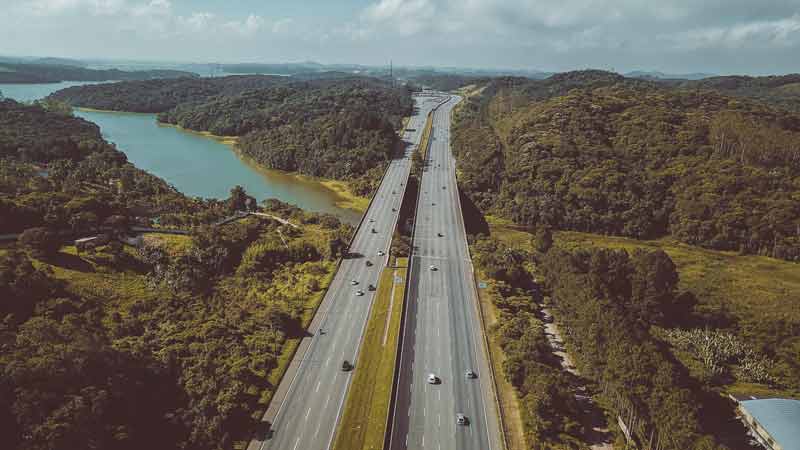
Habitat fragmentation messes up biodiversity in several ways. It’s like breaking up a jigsaw puzzle, where you have fewer places for creatures to live. This translates into loss of habitat.
It happens because habitat fragmentation destroys habitats. And it also splits them into smaller pieces. It’s hard on plants and creatures that can’t move because they are not quick enough to adapt to these changes.
Even small shifts in things like weather or resources, which wouldn’t be a big deal for large populations, can be a disaster for small groups. So, habitat fragmentation often leads to species disappearing. Thus biodiversity is a common occurrence in habitat fragmentation.
It also creates problems at the edges of these habitat fragments. The climate there changes, making it more likely for fires to start. Also, invasive species can take over.
Domestic animals can disrupt the natural balance too. Studies show that edge effects have more adverse consequences for species richness in fragmented land.
The areas right on the edges of these fragments have different climates and different types of species compared to the inside. Small fragments aren’t great for species that need to be deeper inside the habitat.
Growing cities and roads have broken up a wildlife habitat in many developing countries. This is also happening in the ocean, with barriers and diversions cutting up the homes of marine creatures.
These fragmented pieces of habitat often can’t provide enough space for creatures to find mates and food.
And for animals on the move, like those migrating, habitat damage and splitting make it hard for them to find places to rest and eat along their journey.
2. Informed Conservation
Habitat fragmentation is a frequent reason for species becoming susceptible or threatened. The presence of practical habitat is crucial to the existence of any species. Conservation biologists face hard decisions when the remaining habitat further fragments.
They have to decide whether it’s better to protect the small, isolated pieces of habitat that are left or try to reconnect them by getting more land. It’s a bit of a puzzle.
Sometimes, some species can find refuge in these separate areas. Some studies suggest that having fragmentation can actually be good for certain species in that area. According to this belief, there is a positive link between species productivity and fragmentation.
This idea is called the “habitat amount hypothesis,” but people aren’t completely sure if it’s true. Despite this, the prevailing wisdom is that general habitat loss occurs.
One way to fix habitat fragmentation is by creating green strips that connect the separate pieces. Sometimes, just a bridge or a tunnel can do the job. It doesn’t solve the problem of losing the inside part of the habitat, though.
Another way is to make the small fragments bigger, but that can be tough because it’s usually more expensive and takes a lot of time and work to do.
The best solution depends on the specific species or ecosystem we’re dealing with. Some animals can move around more, like most birds, so they don’t need one big piece of land. But smaller creatures, like rodents, might be in more danger from predators in open spaces.
3. Genetic Risks
And there’s another issue with these small patches of habitat. They often have smaller population, which means fewer genes are floating around.
This can lead to problems with genetic diversity, making them more vulnerable to changes in their environment. So, the species might struggle to adapt and survive in the long run.
4. Effect on Animal Behaviours
How habitat fragmentation upsets the genetics and death rates of species has been thoroughly studied. The studies have revealed that fragmentation also disturbs the species’ behavior and lifestyles.
This is significant since social interactions can govern and have an effect on a species’ health and endurance. Habitat fragmentation changes the various resources available to local species. The changed environment of habitats affects the behaviors of species. It also affects how species interact with each other.
These behavior changes can happen within a single species, like how they mate, have babies, hunt, move around, communicate, or travel. It can also affect how different species interact, like who’s the hunter and who the prey is.
When animals have to move through unfamiliar areas between these broken-up habitats, they can come in contact with people. Situations like these put them in danger and lower their chances of surviving.
5. Predator-Prey Interactions
Habitat fragmentation caused by human activities can play havoc with the links between predators and prey. It changes how many species there are and how many animals of each species there are.
This messes up the natural order of who eats who in a community. It makes animals change their behaviors and relationships, like a big game of musical chairs.
Lots of prey species have places where they can hide from predators. These safe spots let them have babies and raise their young in peace.
But things like roads and pipelines made by humans can obliterate these safe spots. The absence of safe spots lets predators in, and that upsets the balance in hunting and hiding game.
It can also work the other way around, making more safe spots for prey and fewer predators, which means fewer animals are getting eaten. So, habitat fragmentation can change the balance of who’s eating who.
6. Effect on Microorganisms
Habitat fragmentation isn’t just about large animals and plants. it also messes with tiny creatures like microorganisms. Fragmented habitats affect the little fungi and the insects that live in them, which are all part of the cleanup crew for the environment. That is they break down the accumulated waste in the environment.
This is significant because it affects the food web in these fragments, which are different from the old, undisturbed forests. Peculiar things are also happening at the edges of these fragments, like differences in light, wind, rain, and humidity.
The ‘edge effect‘ comes into play here. These changes create microenvironments that are harmful to the general health of the forest. They allow some generalist species to thrive at the cost of specialists that need specific environments to survive.
